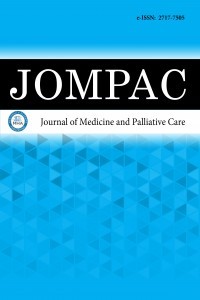1.
Vander Borght M, Wyns C. Fertility and infertility: definition and epidemiology. Clin Biochem. 2018;62:2-10. doi:10.1016/j.clinbiochem. 2018.03.012
2.
Kondagari L, Kahn J, Singh M. Sonography gynecology infertility assessment, protocols, and interpretation. 2023 Jun 7. In: StatPearls [Internet]. Treasure Island (FL): StatPearls Publishing; 2025 Jan.
3.
Ubaldi FM, Cimadomo D, Vaiarelli A, et al. Advanced maternal age in IVF: still a challenge? The Present and the future of ıts treatment. Front Endocrinol (Lausanne). 2019;10(20):94. doi:10.3389/fendo.2019.00094
4.
Makoyo O, Moungala LW, Lendoye E. Ovarian reserve of infertile women in Libreville: a retrospective analysis of 124 cases at the University Mother and Child Hospital in Libreville, Gabon. Afr J Reprod Health. 2023;27(3):19-24. doi:10.29063/ajrh2023/v27i3.2
5.
Pacheco A, Cruz M, Iglesias C, García-Velasco JA. Very low anti-müllerian hormone concentrations are not an independent predictor of embryo quality and pregnancy rate. Reprod Biomed Online. 2018;37(1): 113-119. doi:10.1016/j.rbmo.2018.03.015
6.
Gottardo F, Kliesch S; World Health Organization. Ejakulatdiagnostik: spermiogramm nach WHO-Kriterien 2010 [Semen analysis: spermiogram according to WHO 2010 criteria]. Urologe A. 2011;50(1): 101-1088. doi:10.1007/s00120-010-2466-6
7.
Pastore LM, Christianson MS, Stelling J, Kearns WG, Segars JH. Reproductive ovarian testing and the alphabet soup of diagnoses: DOR, POI, POF, POR, and FOR. J Assist Reprod Genet. 2018;35(1):17-23. doi: 10.1007/s10815-017-1058-4
8.
Huang Y, Li J, Zhang F, et al. Factors affecting the live-birth rate in women with diminished ovarian reserve undergoing IVF-ET.Arch Gynecol Obstet. 2018;298(5):1017-1027. doi:10.1007/s00404-018-4884-4
9.
Fanton M, Cho JH, Baker VL, Loewke K. A higher number of oocytes retrieved is associated with an increase in fertilized oocytes, blastocysts, and cumulative live birth rates.Fertil Steril. 2023;119(5):762-769. doi:10. 1016/j.fertnstert.2023.01.001
10.
La Marca A, Donno V, Longo M, et al. Predicting the total number of retrieved oocytes following double ovarian stimulation (DuoStim).Hum Reprod. 2023;38(9):1784-1788. doi:10.1093/humrep/dead148
11.
Scheffer JB, Carvalho RF, Aguiar APS, et al. Which ovarian reserve marker relates to embryo quality on day 3 and blastocyst; age, AFC, AMH?JBRA Assist Reprod. 2021;25(1):109-114. doi:10.5935/1518-0557. 20200060
12.
Arvis P, Rongières C, Pirrello O, Lehert P. Reliability of AMH and AFC measurements and their correlation: a large multicenter study.J Assist Reprod Genet. 2022;39(5):1045-1053. doi:10.1007/s10815-022-02449-5
13.
Zhang Y, Xu Y, Xue Q, et al. Discordance between antral follicle counts and anti-Müllerian hormone levels in women undergoing in vitro fertilization.Reprod Biol Endocrinol. 2019;17(1):51. doi:10.1186/s12958-019-0497-4
14.
Abdalla H, Thum MY. An elevated basal FSH reflects a quantitative rather than qualitative decline of the ovarian reserve.Hum Reprod. 2004;19(4):893-898. doi:10.1093/humrep/deh141
15.
Romanski PA, Gelvin B, Bortoletto P, Rosenwaks Z, Kang HJ. Live-birth outcomes among women with ınfertility and anti-Müllerian hormone levels of 0.3 ng/ml or lower.Obstet Gynecol. 2022;140(5):743-750. doi:10. 1097/AOG.0000000000004895
16.
La Marca A, Nelson SM, Sighinolfi G, et al. Anti-Müllerian hormone-based prediction model for a live birth in assisted reproduction.Reprod Biomed Online. 2011;22(4):341-349. doi:10.1016/j.rbmo.2010.11.005
17.
Broer SL, van Disseldorp J, Broeze KA, et al. Added value of ovarian reserve testing on patient characteristics in the prediction of ovarian response and ongoing pregnancy: an individual patient data approach.Hum Reprod Update. 2013;19(1):26-36. doi:10.1093/humupd/dms041
18.
Nelson SM, Klein BM, Arce JC. Comparison of antimüllerian hormone levels and antral follicle count as predictor of ovarian response to controlled ovarian stimulation in good-prognosis patients at individual fertility clinics in two multicenter trials.Fertil Steril. 2015;103(4):923-930.e1. doi:10.1016/j.fertnstert.2014.12.114
19.
Iliodromiti S, Anderson RA, Nelson SM. Technical and performance characteristics of anti-Müllerian hormone and antral follicle count as biomarkers of ovarian response.Hum Reprod Update. 2015;21(6):698-710. doi:10.1093/humupd/dmu062
20.
Greene AD, Patounakis G, Segars JH. Genetic associations with diminished ovarian reserve: a systematic review of the literature.J Assist Reprod Genet. 2014;31(8):935-946. doi:10.1007/s10815-014-0257-5a

